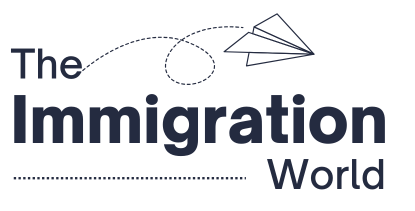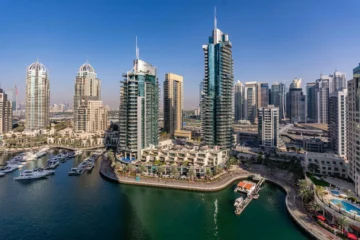If you’ve been eyeing the Land of the Long White Cloud for job opportunities, 2025 might be your year. In May, New Zealand announced a fresh round of updates to its work visa system, specifically targeting the Accredited Employer Work Visa (AEWV) and the Specific Purpose Work Visa (SPWV). These changes are part of a broader effort to address skills gaps, streamline bureaucratic processes, and streamline the immigration process.
Key Takeaways
What Are the Latest Changes to New Zealand’s Work Visa Policies?
The main highlights? The scrapping of the median wage requirement, a shorter work experience timeline, longer stays for lower-skilled workers, and more clarity for employers. These adjustments are being rolled out to make it easier for overseas talent to integrate into New Zealand’s economy while giving local employers the flexibility they’ve been asking for. It’s immigration reform with a practical twist.
Why Has New Zealand Removed the Median Wage Requirement?
One of the biggest headlines is the removal of the median wage requirement, previously a must for AEWV and SPWV applicants. Instead of demanding employers pay at least the median wage (which had priced out many roles), the government has now shifted to the national minimum wage as the new benchmark. For 2025, that’s NZD 23.50 per hour—slightly up from last year’s NZD 23.15.
This change is a game-changer for small and medium-sized businesses, especially in sectors like hospitality, retail, and aged care, where paying the median wage wasn’t always viable. Employers now have more room to hire internationally without blowing up their payroll. That said, they’re still expected to pay a fair wage, comparable to what Kiwi workers earn for the same job. It’s a cost-conscious reform, but not a free-for-all.
How Is the Work Experience Requirement Changing in 2025?
Another welcome shift is the reduction in work experience requirements. Previously, AEWV applicants needed a minimum of three years of relevant work experience. As of May 2025, that requirement has dropped to two years.
This update broadens the pool of eligible applicants and offers a leg up to early-career professionals who may have the skills but not the mileage. It also helps employers who struggle to find highly experienced talent in niche sectors. By lowering the bar just slightly, New Zealand hopes to attract more global workers without compromising on skill quality. For many, this small change could mean a massive difference between visa approval and rejection.
What’s New About Visa Durations for Lower-Skilled Workers?
Historically, lower-skilled roles (classified under ANZSCO Level 4 and 5) came with shorter visa durations, limiting how long foreign workers could stay in the country. That’s now changed. AEWV holders in these roles can stay for up to three years, the maximum continuous period allowed under the scheme.
This is a big win for industries like agriculture, hospitality, and construction sectors that rely heavily on temporary and seasonal labor. The longer duration provides more stability for both employers and workers, reducing turnover and the administrative hassle of renewals. It also signals that lower-skilled doesn’t mean less valued—New Zealand needs workers at all levels, and this policy acknowledges that reality.
Is It Now Harder to Bring Your Family to New Zealand?
Well, here’s the catch. While most changes are loosening the reins, the rules around supporting dependent family members have tightened. The income threshold for visa holders to sponsor their children has jumped from NZD 43,322.76 to NZD 55,844 per year, roughly 80% of the national median wage.
Also Read: Is Your English Good Enough for New Zealand’s 2025 Visa Rules?
This bump is designed to ensure families moving to New Zealand have the financial footing to support themselves without relying on public resources. It may, however, be a hurdle for applicants working in lower-paying sectors. Those looking to relocate with family will need to carefully assess their earning potential or explore additional income sources before applying.
What Do Employers Need to Know About Their New Obligations?
Employers haven’t been left out of this policy reshuffle either. Under the new rules, they must now provide a good-faith declaration confirming they’ve advertised lower-skilled positions (ANZSCO Level 4 and 5) via the Ministry of Social Development (MSD) and interviewed suitable candidates. This step replaces the previously mandatory engagement with MSD—a process that many found burdensome and slow.
This tweak simplifies things. Instead of jumping through hoops, employers can now proceed as long as they make a genuine attempt to hire locally before turning to overseas talent. It maintains a balance between protecting the domestic workforce and making it easier for businesses to fill urgent roles when locals aren’t available or willing.
Will These Changes Make New Zealand a More Attractive Destination?
All signs point to yes. These policy shifts are designed to lower barriers, respond to employer feedback, and align with economic realities. By loosening requirements while keeping certain safeguards in place, New Zealand hopes to reestablish itself as a go-to destination for skilled migrants, especially as competition heats up globally.
The country has already seen a drop in work visa approvals from 2023 to 2024, signaling a need to recalibrate. These reforms could help reverse that trend. By focusing on both talent attraction and labour market fairness, New Zealand is trying to walk a fine line between economic growth and social responsibility.
Whether you’re an aspiring migrant worker or an employer trying to navigate labour shortages, the message is clear: New Zealand wants you, but they also want to keep things fair, practical, and sustainable.





